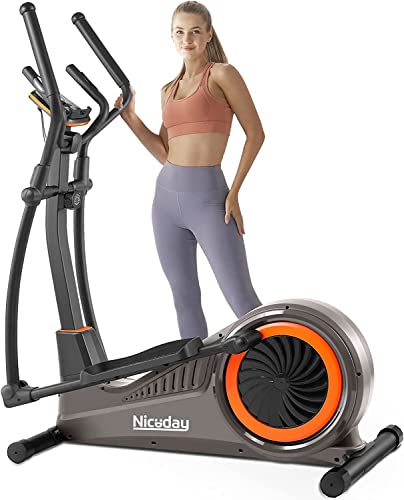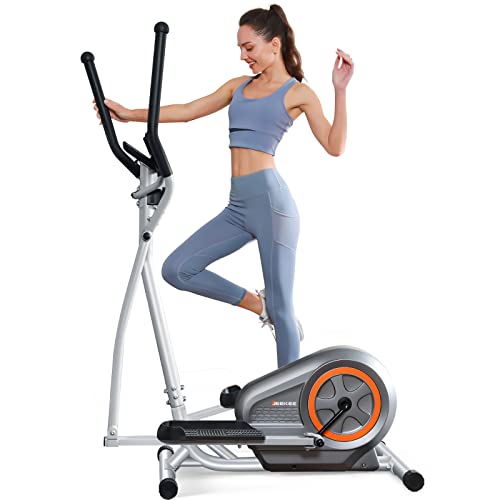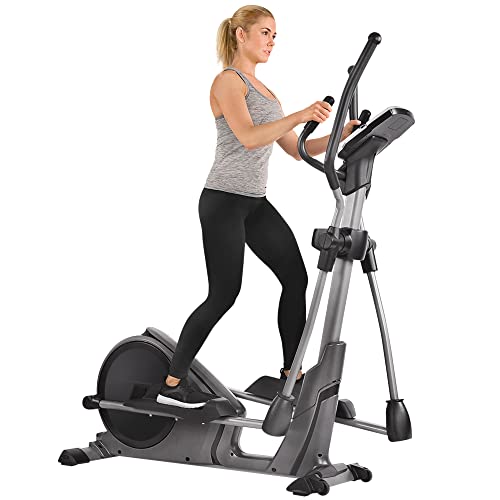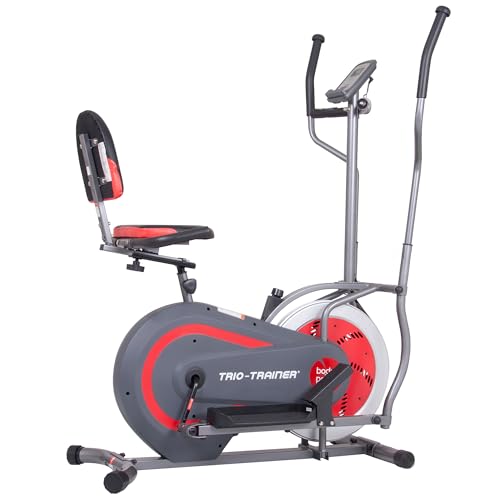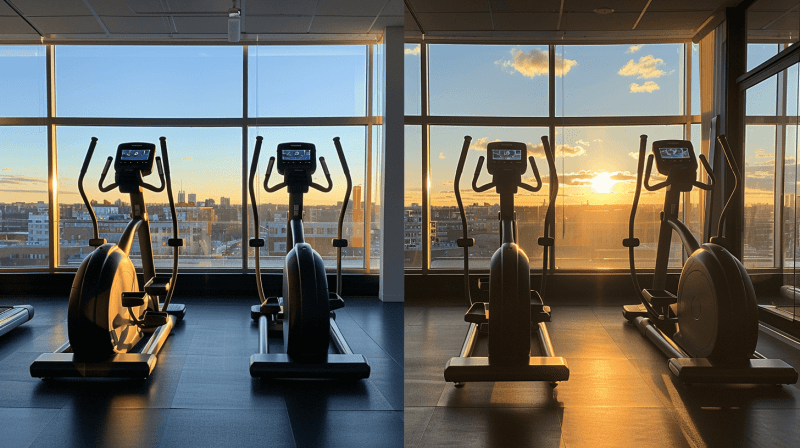If you've ever stepped onto an elliptical machine and felt awkward or unsure, you're not alone. While this popular piece of cardio equipment might seem straightforward, proper form and technique can make the difference between an ineffective workout and a calorie-burning session that transforms your fitness routine. From your posture to your resistance settings, every element of your elliptical workout matters. Whether you're a beginner looking to start your fitness journey or an experienced gym-goer wanting to maximize your results, understanding the correct way to use this versatile machine will help you achieve your health and fitness goals more effectively.
Key Takeaways
-
Keep your spine straight and shoulders back while maintaining an upright posture to ensure proper form and effectiveness.
-
Start with lower resistance for warm-up, then gradually increase intensity throughout your workout session.
-
Distribute weight evenly across your entire foot and avoid leaning forward while gripping handlebars lightly.
-
Engage your core muscles throughout the exercise to maintain balance and maximize workout benefits.
-
Combine forward and backward pedaling motions while varying resistance levels to prevent workout plateaus.
Getting Started on the Elliptical
While many people enjoy watching TV or reading during their workout, it's important to stay aware of your body position and movement patterns.
Keep your weight centered and your spine straight as you exercise, avoiding the tendency to lean forward or slouch. Remember that maintaining proper form is more important than achieving high speed or resistance levels when you're first getting comfortable with the equipment.
Low-impact exercise helps reduce stress on joints while providing an effective cardiovascular workout.
Proper Form and Technique
The most essential aspect of using an elliptical machine effectively lies in maintaining proper form and technique. To get the most out of your elliptical workout, guarantee you're standing tall with your spine straight and shoulders relaxed, which helps prevent unnecessary strain on your back muscles. As you move, distribute your weight evenly across your entire foot while gripping the moving handles to engage both your upper and lower body.
During your workout day after day, you'll want to focus on proper positioning even when you're trying to listen to music or boost your heart rate through interval training. Start with a few minutes keeping the incline low, then gradually work on increasing the resistance to challenge different muscle groups.
You can maximize your results by alternating between forward and backward pedaling motions, which targets various leg muscles and keeps your routine dynamic.
Remember to maintain an upright posture throughout your session, regardless of whether you're doing high-intensity intervals or steady-state cardio. This consistent form ensures you'll get an effective workout while minimizing the risk of injury. Using the cruise control feature helps maintain a steady target heart rate throughout your workout session.
Resistance and Intensity Settings
On your elliptical machine, resistance settings play an essential role in determining workout effectiveness. When using the elliptical, you'll want to gradually increase the resistance throughout your session, making each workout on the elliptical more challenging as you progress. Start with a lower setting that allows you to maintain proper form while you warm up. Most elliptical machines offer magnetic resistance systems that provide smooth operation while building strength. To make the workout feel more intense, increase the resistance until it's difficult to carry on a conversation. You can incorporate short bursts of high resistance intervals to prevent your body from adapting to one consistent level. During these elliptical workouts, you'll notice that higher resistance levels engage more muscle groups and boost calorie burn, even as the machine continues to support your weight. Hold onto the handles lightly while adjusting incline and resistance settings to maintain balance. As you near the end of your workout, gradually decrease the resistance for an effective workout cool-down period. Remember that varying your resistance throughout your sessions not only prevents workout plateaus but also helps build endurance and strength over time.
Upper Body Engagement
Remember that proper form is vital for effective upper body engagement. Keep your core tight, shoulders back, and focus on controlled movements whether you're moving forward or choosing to go backward on the machine. This approach guarantees you're getting the most out of every movement while maintaining proper biomechanics. Maintain a light grip technique on the handlebars to let your legs do most of the work while still engaging upper body muscles.
Workout Programs and Variations
Making your elliptical workouts more dynamic and challenging requires strategic program variations. Instead of using pre-programmed routines the wrong way to use your machine, create customized workouts that alternate between short bursts of maximum effort and recovery periods to optimize your calorie burn.
To make the best elliptical workout, combine forward and backward pedaling motions at varying resistance levels, which prevents your body from adapting while maintaining low impact pressure on your joints. When you're at your base pace, focus on maintaining steady form before shifting to high incline intervals that'll really challenge your muscles.
A 150-pound person can expect to burn approximately 350 calories during a moderate 30-minute elliptical session.
- Push yourself with 30-second maximum effort sprints, followed by 90 seconds to catch your breath
- Alternate between forward and backward strides every 2 minutes, targeting both quadriceps and hamstrings
- Incorporate resistance changes every 3-5 minutes to maintain workout efficiency
Remember that the most effective routines combine different movement patterns with varying intensities. By switching between forward and backward motions while adjusting resistance and speed, you'll create an extensive workout that continues to challenge your body and improve your fitness level.
Frequently Asked Questions
Is There a Correct Way to Use the Elliptical?
Yes, you'll want to focus on maintaining proper stride length, keeping an upright posture, using controlled arm movements, and adjusting resistance levels. Don't forget to warm up, monitor your heart rate, and maintain smooth strides.
Can You Lose Belly Fat on an Elliptical?
Yes, you can lose belly fat by using proper stride length, resistance, and incline settings on the elliptical. Combine interval training with consistent workouts and proper diet to maximize calorie burn and reduce overall body fat.
Is 30 Minutes a Day on Elliptical Enough?
Yes, 30 minutes on an elliptical can be enough if you're maintaining fitness. You'll maximize your workout's effectiveness by adjusting resistance and incline levels, maintaining proper stride length, and staying consistent with your routine.
Do You Keep Your Feet Flat on an Elliptical Machine?
You should keep your feet flat on the pedals for proper foot positioning and biomechanics. This helps maintain good posture and form while allowing natural stride length adjustments during your workout.
Conclusion
You'll find that mastering proper elliptical technique transforms your workouts into efficient calorie-burning sessions. With consistent practice and attention to form, you're able to maximize the machine's low-impact benefits while protecting your joints. Remember that a 30-minute elliptical session can burn roughly 350 calories, equivalent to jogging three miles, making it an effective choice for your cardio routine. By applying these guidelines, you'll get the most from every workout.

